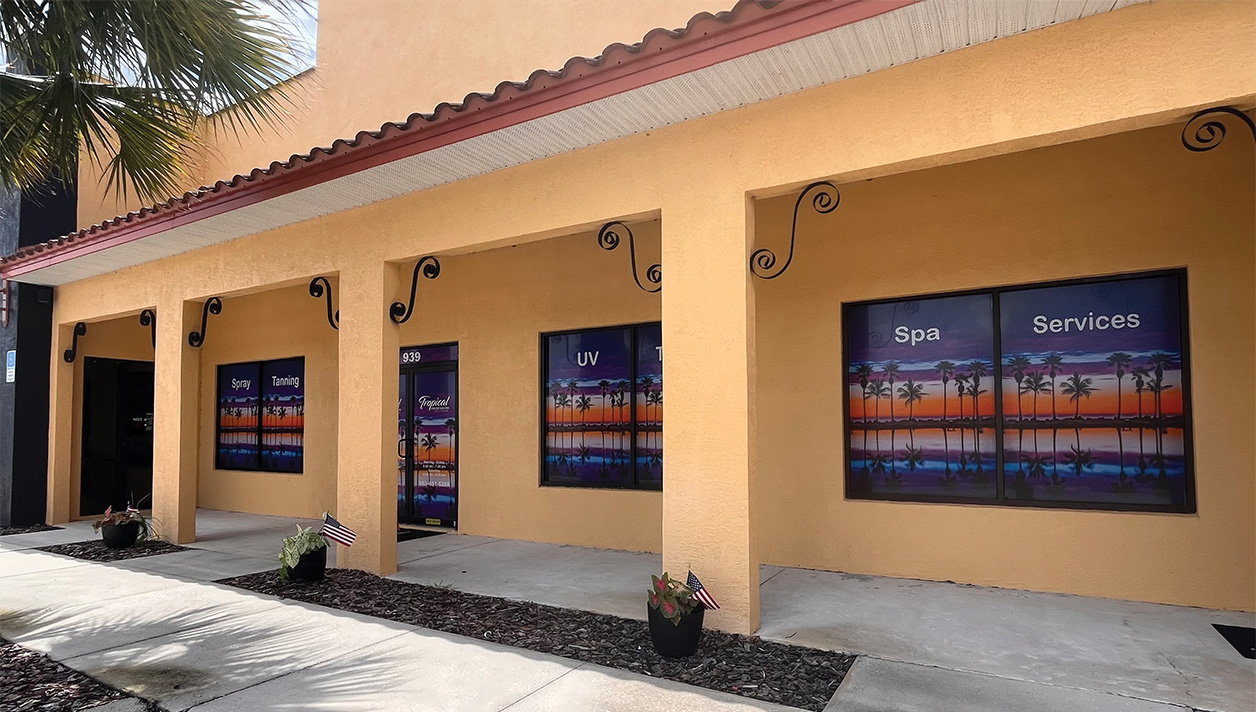Due to the hardworking efforts of the Indoor Tanning Association, many important questions regarding the U.S. Food and Drug Administration’s reclassification of sunlamps and tanning systems have been addressed!
Recently, the FDA issued a reclassification rule for tanning units and sunlamps, making them Class II medical devices. On the whole, this change does not constitute excessive governmental interference, especially when compared to the Federal Tan Tax and under-18 tanning bans. Since the ruling was announced, however, the ITA had several questions regarding the new regulations, especially pertaining to what’s required of tanning salon owners. In its continuing efforts to protect everyone’s right to tan, the ITA sent its list of questions to the FDA and members from that Federal department took the time to respond.
Following is a transcript of the ITA’s questions along with the FDA’s responses. John Overstreet, ITA Executive Director, urges tanning professionals to treat FDA’s answers as opinions – for the moment. He added, “In our experience, new laws and regulations are often open to interpretation in the beginning, and are often revised and edited after their initial publication. For now, salon owners should use these questions and the FDA’s answers as guidance but not as a legal opinion. If a business owner is in doubt about how the regulations apply to his or her business, they should consult an attorney. If anything should change, we’ll be the first to update everyone in this industry.”
Questions for discussion with the FDA regarding the implementation of the device reclassification rule for sunlamp products and UV lamps:
1. Black Box warning label on sunlamp products – § 878.4635(b)(6)(i)(A).
A.
It is our understanding that tanning salons and other sunlamp product owners must produce and apply the black box warning label to a sunlamp product currently in the field if the manufacturer is no longer in business or is in business but no longer selling that model product. (Reference to Response 11 in the preamble to the final rule.) Is this understanding correct?
Ans: If your meaning of currently in the field is that sunlamp product is currently being used, then yes it needs the warning label.
B.
If a salon owner is currently leasing a tanning bed from a third-party leasing company that is not the manufacturer, who is responsible for applying the black box labeling? We interpret the rule as requiring either the leasing company (as the “owner” of the bed) or the salon owner (as entity leasing the bed) to apply the black box labeling (but not the bed manufacturer, who may not be aware of where the leased tanning bed is). Is this understanding correct?
Ans: The current operator/owner of the sunlamp product is the responsible party. Typically, under the lease agreement, the current leasee is the temporary responsible party of that sunlamp product.
C.
Will FDA begin to inspect tanning salons in order to enforce this labeling requirement? Will FDA begin to inspect other facilities that offer indoor tanning? If not, what steps will FDA be taking to assure compliance with this labeling requirement?
Ans: The boxed warning is required to be placed on all indoor tanning devices. Additional warnings are included for labeling to inform users of the risk of UV tanning. Compliance tools include warning letters and other appropriate actions.
2. User Instructions on cleaning and disinfection of sunlamp products between uses – § 878.4635(b)(6)(i)(B)
A.
It is our understanding that the manufacturer is required to provide User Instructions on cleaning and disinfection of sunlamp products between uses. Is this requirement satisfied if such instructions are in the current User Instructions for sunlamp products already in the field?
Ans: The current cleaning and disinfection instructions could be sufficient.
B.
If new User Instructions are needed, is it sufficient to provide one set of revised User Instructions to each customer, rather than one set per bed in the field?
Ans: The intent of the regulation is that each sunlamp product has adequate instructions for use. I believe one per product is correct.
C.
If a manufacturer is in existence but has discontinued a particular model of sunlamp product, it is our understanding that the manufacturer is not required to provide new User Instructions for that model line. Is this understanding correct?
Ans: Yes. Please follow existing regulations for GMPs, and QS Regs.
D.
It is our understanding that this requirement applies to sunlamp product manufacturers, but not to salon owners or third-party leasing companies. Is this understanding correct? (Reference Response 10)
Ans: Correct, the salon owners may not have the needed information about the device to adequately develop proper cleaning and disinfection instructions.
E.
If the owner of a sunlamp product (salon or leasing company) sells one of its existing tanning beds (currently in the field) to another salon or entity, would the owner/seller be required to create and provide User Instructions on cleaning/disinfection if the manufacturer did not (e.g., the model has already been discontinued and no 510(k) or labeling will be submitted under this rule)?
Ans: No
3. Labeling of Contraindications and Warnings for Sunlamp Products and Lamps – § 878.4635(b)(6)(ii)
This regulation requires that “manufacturers” of sunlamp products and UV lamps include certain Contraindication and Warning statements in the user instructions. It also requires that “manufacturers” “shall provide or cause to be provided” these statements in “consumer-directed catalogs, specification sheets, descriptive brochures, and Web pages in which [the products] are offered for sale.”
A.
It is our understanding that this requirement applies to materials that constitute “labeling” – but not to “advertising” such as in trade magazines or consumer-directed magazines (e.g., People magazine). Is this understanding correct? (If not, please explain the basis for any FDA assertion of authority over advertising.)
Ans: Advertising and labeling are not the same material and jurisdiction is different depending on whether the device is restricted. We are developing agency guidance on social media but it is an ongoing process. This applies to item b. below as well. On all media, though, the claims should be not false and misleading, and if we don’t have authority over claims or representations, then the Federal Trade Commission does.
B.
Does this requirement apply to email and social media (e.g., Twitter) used by sunlamp product manufacturers and UV lamp manufacturers to communicate to their customers (the salon owners)?
Ans: These are not included in the definition of “web pages where products are offered for sale,” as provided in the regulation, so it will depend on the recommendations that FDA makes in the various social media guidances that are being written.
C.
It is our understanding that this requirement does not apply at all to salon owners who advertise their tanning salons and indoor tanning services in brochures, magazines, and other media. Is this understanding correct? (If not, please explain how it would apply to salon owners and the basis for that determination.)
Ans: No, it does apply to them. It may apply if they are considered distributors or practitioners who hold the products for sale once they are in interstate commerce.
4. 510(k) Notification Requirement for Sunlamp Products and UV Lamps for Sunlamp Products
A.
It is our understanding that any currently marketed sunlamp product – even those marketed pursuant to the 510(k) exemption – is eligible to be a predicate device. (Reference Response 16) Is this correct?
Ans: Yes, if legally marketed, meets performance standard, and was/is registered and listed.
B.
We are aware that some companies (not ITA members) have introduced tanning beds to the market without submitting an establishment registration or device listing to FDA. Are those non-listed products eligible to be a predicate device?
Ans: No, because they are not legally marketed.
C.
If a manufacturer remains in business, but decides to discontinue a particular sunlamp product model or type within a model (e.g., keep a 10-lamp Model X but discontinue the 20-lamp Model X), and thus does not submit a 510(k) notification for that product model or type, can a sunlamp product owner later sell that sunlamp product to another salon without a 510(k) notification being in effect for that particular product model assuming the required labeling has been applied to that unit?
Ans: Yes, that sunlamp product can be sold without a 510(k). The new owner will be responsible for that sunlamp product meeting the performance standard and the 878.4535 special controls.
D.
Can a salon owner enter into an asset purchase agreement in which all of its equipment, furnishings and intellectual property, is sold to another company, including but not limited to the sunlamp equipment for which no 510(k) has been submitted? (That is, the sunlamp products are not separately sold, but are sold as part of “all assets.”)
Ans: Yes. The new owner will be responsible for that sunlamp product meeting the performance standard and the 878.4535 special controls. The owner or operator will continue to be responsible for complying with the boxed warning label provision and for the safety of operation of the equipment.
E.
If a manufacturer is out of business and thus there is no 510(k) notification for their existing sunlamp products, can a sunlamp product owner sell that sunlamp product to another salon as long as the required labeling has been applied to that unit?
Ans: Yes. The new owner will be responsible for that sunlamp product meeting the performance standard and the 878.4535 special controls.
F.
It is our understanding that some salon owners are modifying sunlamp products (e.g., to change the timer settings). If a salon owner modifies a sunlamp product in its possession, does it become a “manufacturer” of that modified tanning bed and thus subject to 510(k) requirements for the modified device?
Ans: Yes.
G.
If not, has the salon owner violated Section 301(b) of the FDCA by adulteration and/or misbranding of the device which is then offered for use by salon customers?
Ans: Modified sunlamp products would be adulterated and non-compliant.
On behalf of every industry sector, the Indoor Tanning Association continues to closely monitor the FDA reclassification. For more info about this important issue, call the ITA at 703.336.3632, or visit theita.com.
Executive Director’s Report
After a couple of months have passed and we have had time to digest the FDA’s order reclassifying sunlamps and sunlamp products to class II medical devices, and after getting clarification from the agency on several key points, most of the men and women on the ITA Board have concluded that the reclassification order could have been a great deal more burdensome, especially for the salons.
Regarding teen access, the ITA has always taken the position that whether or not a teen tans indoors is a decision for his or her parents to make and the new label that must be on all beds stating that sunbeds should not be used by anyone under age 18 falls short of an outright ban.
In the reclassification order, the FDA “grandfathered” all equipment already in the field. Going into this process, the ITA Board was also very concerned that equipment produced by a manufacturer no longer in business or discontinued bed lines would be ruled non-compliant and required to be taken out of service. This could have been devastating for thousands of business owners.
When you look at the final order in terms of what could have been, there is no doubt that all the work the industry did over the past three years including orchestrating pushback on the agency through our supporters on Capitol Hill had an ameliorating influence on the process and was well worth the time and effort.
With the reclassification issue behind us, we now have to focus on another rulemaking working its way through the FDA which will affect our industry for decades … amendments to the performance standard 21 CFR 1040.20. These amendments will come in the form of a rulemaking, a much more formal and slow process than we witnessed with the recent administrative order.
While we wait for FDA’s CDRH to act, the ITA will continue to marshal our political resources, stay in close touch with the FDA and hopefully work toward an outcome that will satisfy the regulatory urges of the administration and still give the industry a reasonable set of rules under which to operate our businesses.
Thanks,
John Overstreet



























